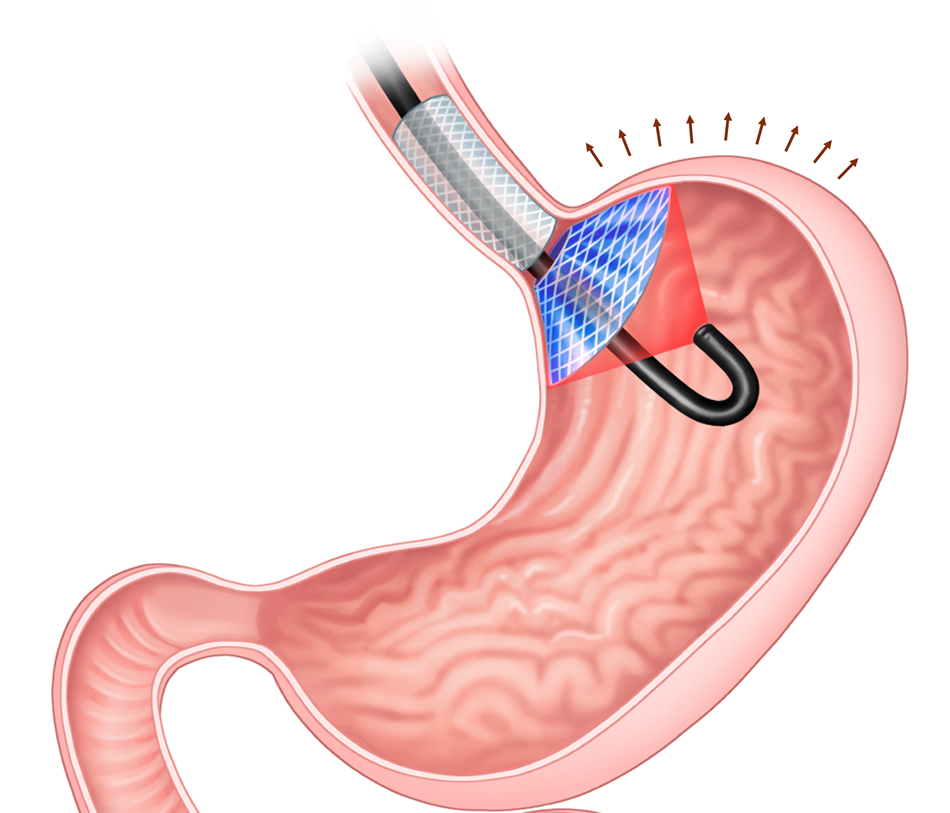Reviewed by Alex SmithApr 7 2022
Weight-loss surgery can be an effective obesity therapy when eating and exercise are ineffective. Individuals who do not want surgery, on the other hand, can have an appetite-suppressing balloon or perhaps another implant placed in their stomach.
 In this illustration, an implant (blue and gray) creates a feeling of fullness by pressing on the stomach and, when activated by a laser (black), killing cells that produce the hunger hormone. Image Credit: ACS Applied Materials & Interfaces
In this illustration, an implant (blue and gray) creates a feeling of fullness by pressing on the stomach and, when activated by a laser (black), killing cells that produce the hunger hormone. Image Credit: ACS Applied Materials & Interfaces
In ACS Applied Materials & Interfaces, researchers say that they have improved that method in laboratory animals by encapsulating an implant with a laser-activated dye that destroys cells that produce ghrelin, the “hunger hormone.”
After a local anesthetic, implants can be put into the stomach through the mouth. Hwoon-Yong Jung, Jung-Hoon Park, and their colleagues created a novel type of implant in 2019. The “intragastric satiety-inducing device” (ISD) is made up of a stent that sits in the lower esophagus and a disc that sits in the stomach opening. A hole in the center of the disc allows food to pass through.
The ISD reduced food intake and weight growth in pigs by increasing the feeling of fullness and lowering levels of ghrelin, a hormone produced by cells towards the top of the stomach. However, the gadget generated issues such as acid reflux and migration into the stomach.
Jung, Park, Kun Na, and colleagues intended to see if they could suppress ghrelin even further by coating the ISD’s disc with a chemical that could destroy some of the ghrelin-producing cells with a pulse of laser light. To reduce the adverse effects related to the original design, the implant could then be excluded.
The team coated ISDs with methylene blue, an FDA-approved chemical, and then inserted them in the stomachs of young pigs in this exploratory trial. When the coating was subjected to laser light, it produced singlet oxygen, an energetic form of oxygen that killed neighboring ghrelin-producing cells in the pigs’ stomachs and then vanished quickly.
When compared to an untreated pig, the light treatment lowered ghrelin levels and body weight growth by half after one week, however, these differences faded in the weeks that followed unless the light treatment was reapplied.
According to the researchers, with future improvement, the easy method could become a new version of minimally invasive treatment to help obese patients lose weight.
The authors gratefully acknowledge funding from the Korean government’s Korea Medical Device Development Fund.
Journal Reference:
Lee, S., et al. (2022) Photodynamic Methylene Blue-Embedded Intragastric Satiety-Inducing Device to Treat Obesity. ACS Applied Materials & Interfaces. doi.org/10.1021/acsami.2c00532.